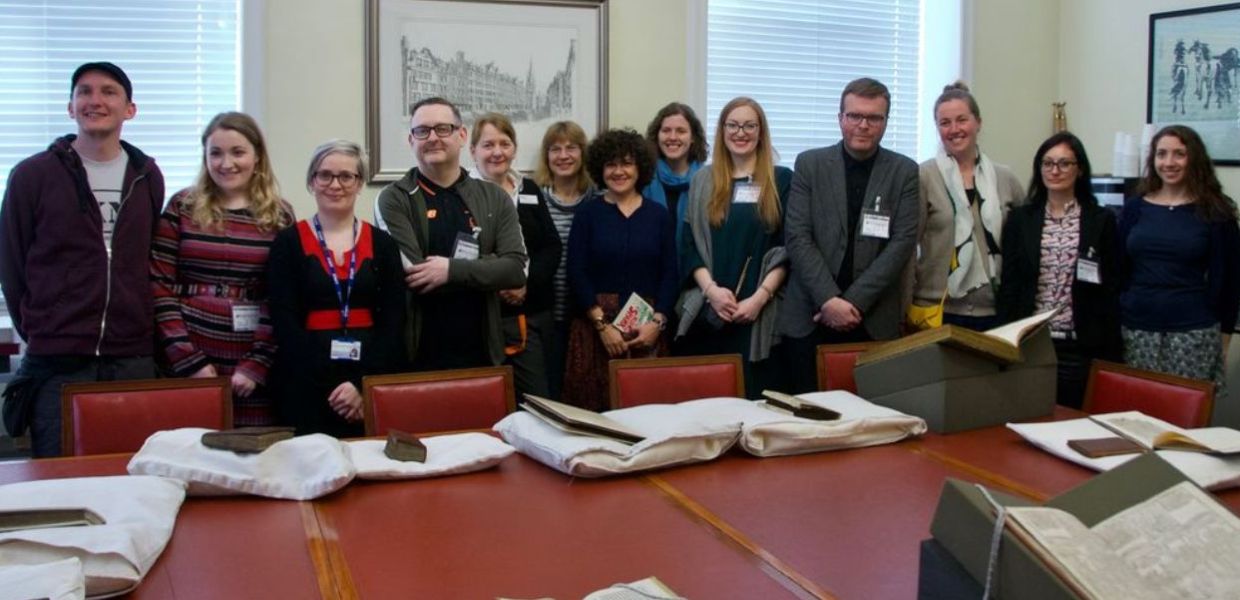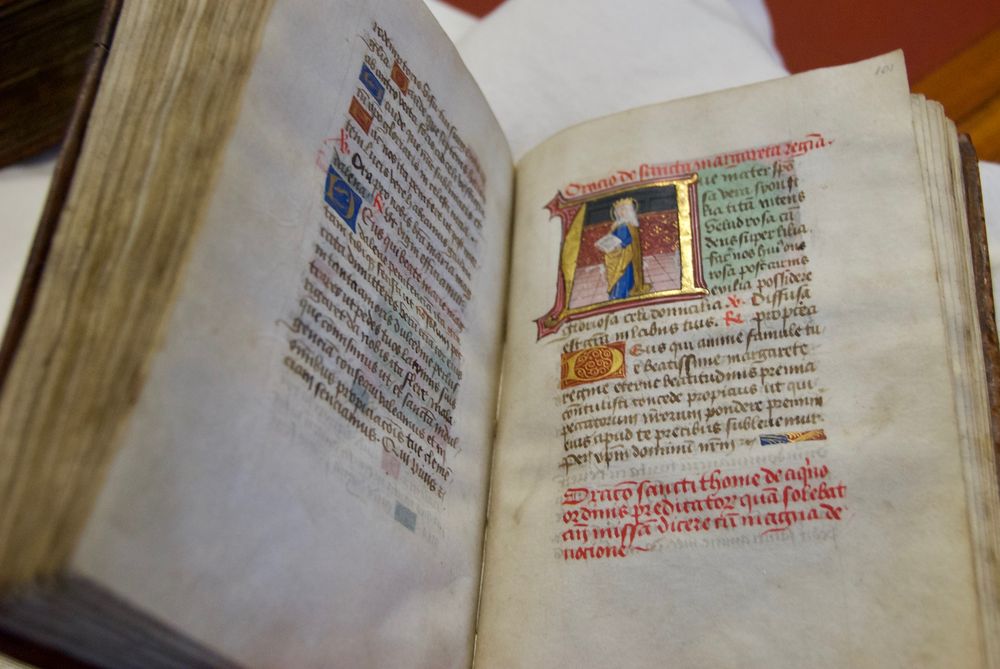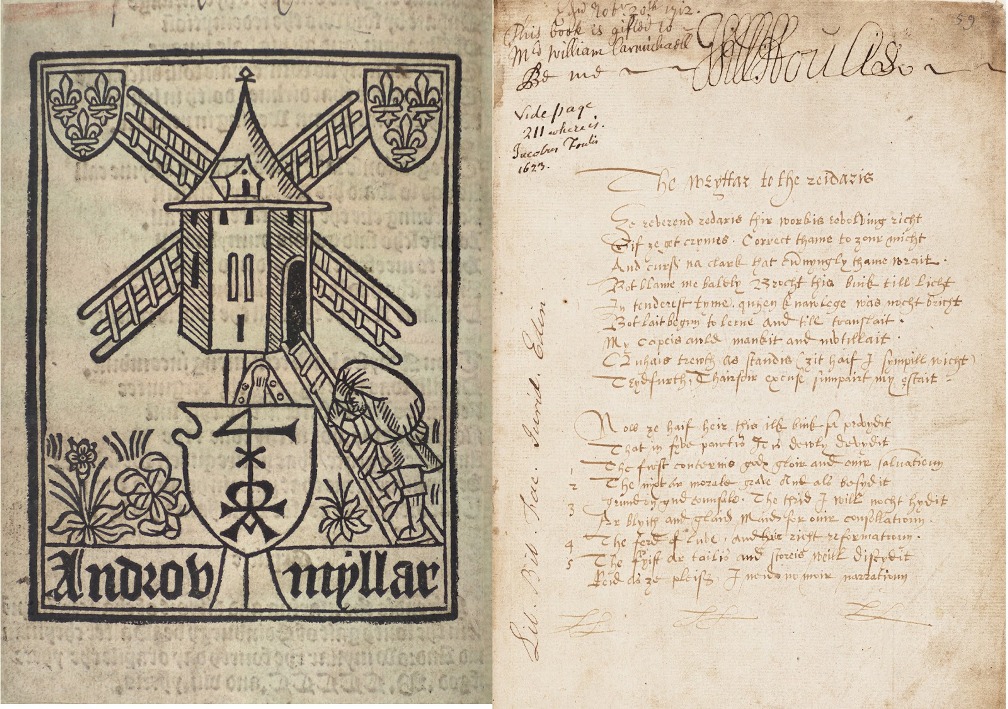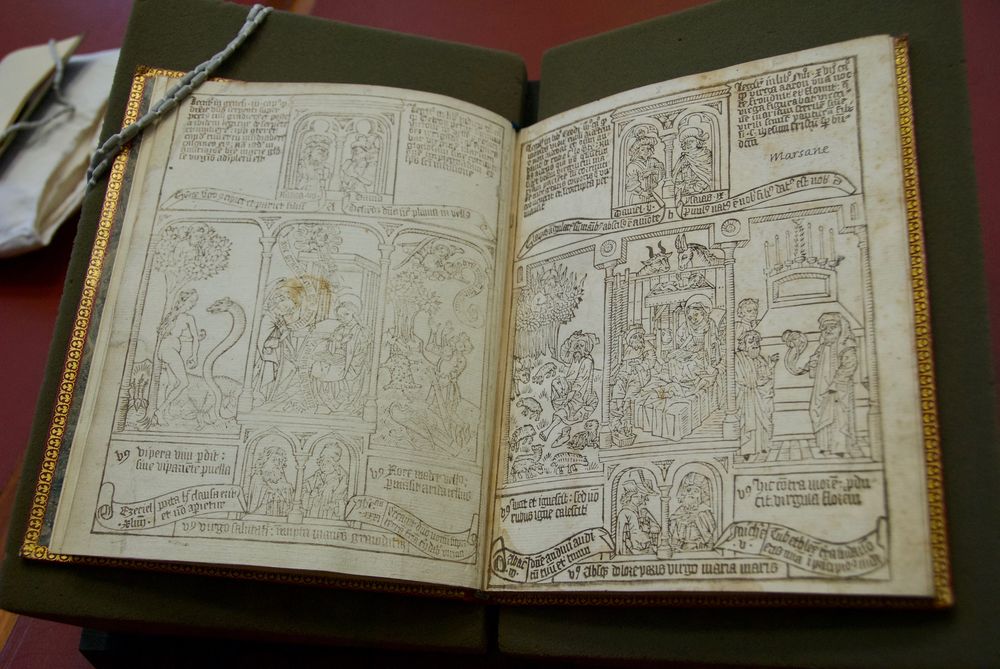From the earliest Scots Gaelic to Dutch children’s books - how we’re telling the story of literacy in Europe
The partners behind the Rise of Literacy project talk texts and give us a glimpse into how they’ll use written material from across the centuries to showcase the history of literacy in Europe.

- Title:
- A photo of the editorial planning group of the Rise of Literacy project as they were treated to a special viewing of some of the treasures of the National Library of Scotland’s manuscripts collections.
- Creator:
- Elizabeth MacDonald
- Date:
- April 2018
- Country:
- United Kingdom
- Copyright:
- CC BY-SA
On 18 April 2018, members of the Rise of Literacy editorial team representing eight of Europeana’s partner institutions, met at the National Library of Scotland in Edinburgh to discuss the delivery of the project’s editorial content. This group is leading the writing and coordination of exhibitions, galleries and blogs for the project, drawing together digital heritage content from all partners to shed light on the pan-European topic of the rise of literacy.
It’s all about teamwork
Our greatest gift is the rich content that is already on Europeana Collections or being digitised by the partner organisations. With material ranging from the earliest records of writing in Scottish Gaelic from the 16th century to Dutch children’s books from the 1950s, presenting a pan-European perspective on literacy is going to be a joy and a challenge!

A detail of St Margaret in The Blackadder Prayerbook (15th century). Elizabeth MacDonald, CC BY-SA.
Working collaboratively, our contributors will be writing draft texts and sharing images from their collections to produce editorials that showcase the history of European literacy, even before newly-digitised material is available on the Europeana platform (we expect most of this to arrive in October 2018).
Our discussions provided very fertile ground for collaborative ideas and common themes between the content from partner institutions and that which is already on Europeana Collections. The platform already hosts a wealth of content from providers across Europe, so we may be in touch to let you know that we are featuring images from your collections as part of the story of literacy in Europe!
'You may delay, but time will not' - Benjamin Franklin
Along with content, an important part of our planning is time. Considering the digitisation and future ingestion of lots of new material, discussing timelines was essential. We drafted a workflow which takes us through each step of the editorial process, from planning to delivery. This will allow us to create content that is rich, consistent across editorials and, importantly, delivered on time! A visual timeline will also allow us to schedule a steady flow of editorial content throughout the project and beyond so that the celebration of textual content from libraries and institutions across Europe continues to grow and develop on Europeana long after February 2019. We also hope that these tools and methods will help provide a working model for future projects.

‘Device of Androw Myllar’ from the Chepman and Myllar prints (left) and ‘Wryttar to the reidaris’ in the Banatyne Manuscript, f. 59 (right). National Library of Scotland, CC BY-SA.
As hosts, we couldn’t pass up the opportunity to show our partners some of the exciting material that the National Library of Scotland will be contributing! For instance, we got to see and touch the first books printed in Scotland, the Chepman and Myllar prints from 1508, and the Bannatyne Manuscript from 1568, which sheds light on the manuscript culture of Scotland and contains Scottish poems that would otherwise have been lost.
The next steps
As the planning stage draws to a close, we can now focus on curating the material that’s coming in from 11 partner institutions to showcase the Rise of Literacy across Europe, from manuscripts to newspapers and children's spelling books to bestsellers. In May 2018 we launched the new Europeana Manuscripts Collection, showcasing the best of Europe’s manuscripts with expert editorial. Later in the summer, you’ll have access to an unparalleled collection of political, social and cultural history in the Europeana Newspapers Collection.

Biblia pauperum (c. 1460) An example of early printed “block book”. Elizabeth MacDonald, CC BY-SA.


